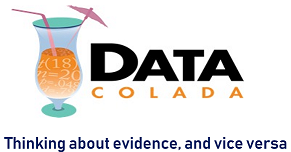In the seventh installment of Data Replicada, we report our attempt to replicate a recently published Journal of Consumer Research (JCR) article entitled, “Product Entitativity: How the Presence of Product Replicates Increases Perceived and Actual Product Efficacy” (.html). In this paper, the authors propose that “presenting multiple product replicates as a group (vs. presenting a…
[89] Data Replicada #6: The Problem of (Weird) Differential Attrition
In this sixth installment of Data Replicada, we report our attempt to replicate a recently published Journal of Consumer Research (JCR) article entitled, “The Impact of Resource Scarcity on Price-Quality Judgments” (.html). This one was full of surprises. The primary thesis of this article is straightforward: “Scarcity decreases consumers’ tendency to use price to judge…
[88] The Hot-Hand Artifact for Dummies & Behavioral Scientists
A friend recently asked for my take on the Miller and Sanjurjo's (2018; pdf) debunking of the hot hand fallacy. In that paper, the authors provide a brilliant and surprising observation missed by hundreds of people who had thought about the issue before, including the classic Gilovich, Vallone, & Tverksy (1985 .htm). In this post:…
[87] Data Replicada #5: Do Human-Like Products Inspire More Holistic Judgments?
In the fifth installment of Data Replicada, we report our attempt to replicate a recently published Journal of Consumer Research (JCR) article entitled, “The Influence of Product Anthropomorphism on Comparative Choice” (.html). A product becomes “anthropomorphized” when it is imbued with human-like features, such as a face or a name. For example, this camera, which…
[86] The Data Colada Seminar Series
We miss the old seminars and conferences. While we wait for those to happen again, we’ve decided to organize a seminar series ourselves. Most talks will probably be about behavioral science, but we are figuring things out as we go. The one thing that all talks will have in common is that all three of…
[85] Data Replicada #4: The Problem of Hidden Confounds
In this installment of Data Replicada, we report on Study 3 of a recently published Journal of Consumer Research article entitled, “Does Curiosity Tempt Indulgence?” (.htm). In that study, participants were induced to feel curious or not and then were asked to (hypothetically) choose between two gym memberships, one for a “normal” gym and one…
[84] Data Replicada #3: Does Self-Concept Uncertainty Influence Magazine Subscription Choice?
In the third installment of Data Replicada, we report our attempt to replicate a recently published Journal of Consumer Research (JCR) article entitled, “The Uncertain Self: How Self-Concept Structure Affects Subscription Choice” (.htm). The central theory in the paper can be expressed in the following way: If you are uncertain about your own self-concept, then…
[83] Data Replicada #2: Do Self-Construal and Group Size Influence How People Make Choices on Behalf of a Group?
In this second installment of Data Replicada, we report two attempts to replicate a study in a recently published Journal of Consumer Research (JCR) article entitled, “Wine for the Table: Self-Construal, Group Size, and Choice for Self and Others” (.htm). Imagine that you are in a monthly book club and it is your job to…
[82] Data Replicada #1: Do Elevated Viewpoints Increase Risk Taking?
In this post, we report our attempt to replicate a study in a recently published Journal of Marketing Research (JMR) article entitled, “Having Control Over and Above Situations: The Influence of Elevated Viewpoints on Risk Taking” (.htm). The article’s abstract summarizes the key result: “consumers’ views of scenery from a high physical elevation induce an…
[81] Data Replicada
With more than mild trepidation, we are introducing a new column called Data Replicada. In this column, we will report the results of exact (or close) preregistered replications of recently published findings. Anyone who has been paying attention will have noticed that the publication of exact (or close) replications has become increasingly common. So why…
